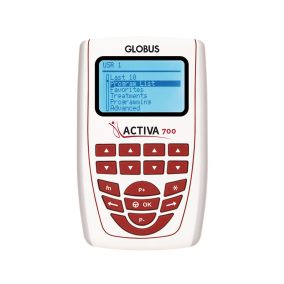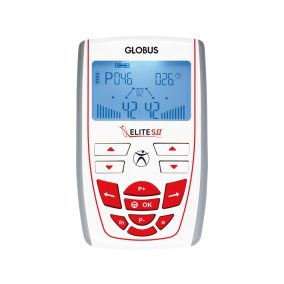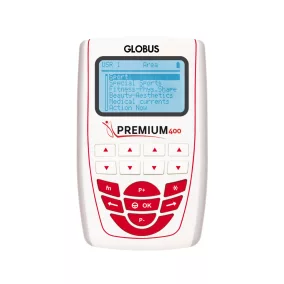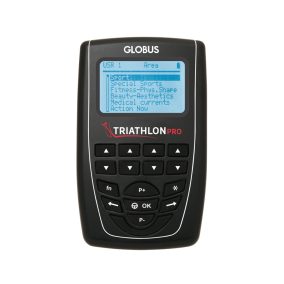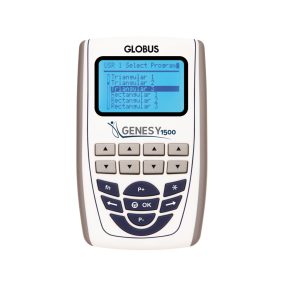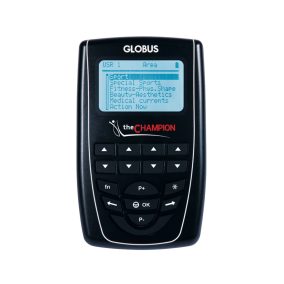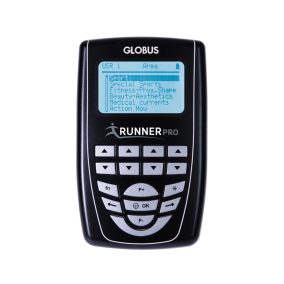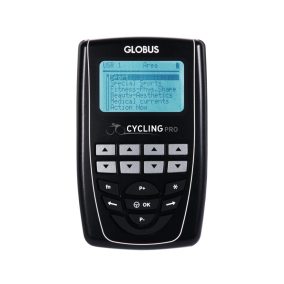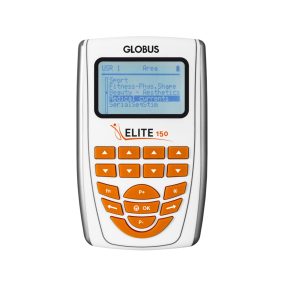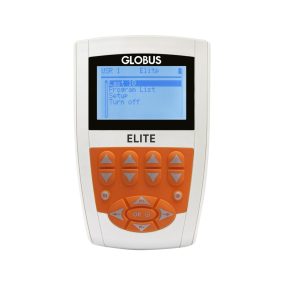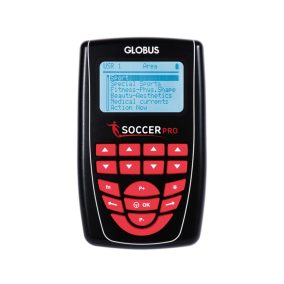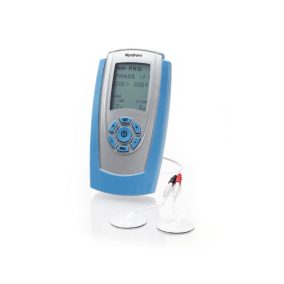Pain relief, muscle stimulation, anti-inflammatory, regeneration, rehabilitation, fitness and sports as well as a wide range of beauty care (EMS and G-Pulse) programs.
Selectable program languages: Hungarian, English, Italian, French, Spanish, German
Price includes: 1 pc Activa 700 device | carrying bag | 4 colored cables | 2 gray cables for MENS treatment | 4 self-adhesive 5x5cm + 4 self-adhesive 5x9cm electrodes | 1 power adapter | 1 G-Trode facial treatment probe | 1 tube contact gel
Elite SII: multifunctional electrotherapy device. TENS/EMS programs. 100 programs. 2 channels.
Price includes: Elite SII device, 2 cables, 4 pcs 50x50mm and 4 pcs 50x90mm TENS electrodes, battery charger, carrying bag
Premium 400: multifunction electrotherapy device. TENS /EMS /MCR-MENS /FES /iontophoresis. Specialized programs for running, cross-country skiing, combat sports, tennis, football, cycling. 4 channels, battery operated.
Price includes: 1x Premium 400 device, 4x colored stimulating cables, 2x cables for microcurrent treatment, 4x 50x50mm and 4x 50x90mm TENS electrodes, 1x battery charger, 1x carrying bag
Triathlon Pro: multifunctional electrotherapy device. TENS /EMS /MCR-MENS /FES /iontophoresis. Special sport: triathlon. 4 channels, battery powered.
Price includes: Triathlon Pro device, 4 colored cables, 2 cables for microcurrent treatment, 4 pieces 50x50mm and 4 pieces 50x90mm TENS electrodes, battery charger, carrying bag
Genesy 1500: multifunctional electrotherapy device. TENS /EMS /MCR-MENS /FES / denervated / Kotz / IF / iontophoresis. 4 channels, battery and power supply operation.
Price includes: device, 4 cables, 2 cables for microcurrent treatment, 4 pcs 50x50mm and 4 pcs 50x90mm TENS electrodes, battery charger, carrying bag
The Champion: multifunctional electrotherapy device. TENS /EMS /MCR-MENS /FES /iontophoresis. Special sport: 13 sports. 4 channels, battery powered.
Price includes: The Champion device, 4 color cables, 2 cables for microcurrent therapy, 4 pcs 50x50mm and 4 pcs 50x90mm TENS electrodes, battery charger, carrying bag
Runner Pro EMS 4 channels muscle stimulator device, also including TENS / EMS / MCR–MENS / FES / Iontophoresis programs.
- 30 programs designed for runners
- Strengthening and regeneration of muscles used in running
- Special programs for trail runners
- Fast muscle regeneration
- Reduces muscle soreness
- Fast treatment of injuries
- For sprains and inflammation
Package includes:
- Runner Pro muscle stimulator device
- 4 colored cables (TENS/EMS)
- 2 cables for microcurrent treatment
- 4 pcs 50x50 mm + 4 pcs 50x90 mm self-adhesive electrodes
- Battery charger
- Carrying bag
Cycling Pro: multifunctional electrotherapy device. With TENS/EMS/MCR-MENS/FES/iontophoresis programs.
- 46 cycling sport programs
- Road and mountain cycling programs
- Muscle development, muscle regeneration
- Endurance-strength, aerobic endurance improvement
- Capillarization, warm-up
- Microcurrent programs for inflammation reduction
Price includes: Cycling Pro device, 4 color cables, 2 cables for microcurrent treatment, 4 pcs 50x50mm and 4 pcs 50x90mm TENS electrodes, battery charger, carrying bag
Elite150: TENS/EMS device / 150 treatment programs / 4 channels, battery operated.
What to use it for?
Specific Programs
- For muscle group development (abdomen, back, thigh, arm)
- Muscle mass increase and strength development
- Muscle regeneration and active rest
- Preparation and warm-up before training
- Electrode necessary for your training included in the package
Price includes: 1x Elite 150 device, 4x colored stimulating cables, 4x 50x50 mm and 4x 50x90 mm TENS electrodes, 1x battery charger, 1x carrying bag
What is it used for?
- Pain relief, edema reduction, rehabilitation after surgery or illness
- Programs supporting sports preparation and muscle regeneration
- Programs for injury treatment and prevention
- Shaping and fitness programs
- Weight loss support
- Assistance with post-pregnancy body recovery
Price includes: 1x Elite device, 4x colored stimulating cables, 4x 50x50mm and 4x 50x90mm TENS electrodes, 1x battery charger, 1x carrying bag
Soccer Pro: multifunctional electrotherapy device. TENS /EMS /MCR-MENS /FES /iontophoresis. Special: soccer. 4 channels, battery-powered.
Price includes: Soccer Pro device, 4 colored cables, 2 cables for microcurrent treatment, 4 pcs 50x50mm and 4 pcs 50x90mm TENS electrodes, battery charger, carrying bag
MyoBravo: multifunctional electrotherapy device. TENS /EMS /FES. Programs supporting sports preparation. 2 channels, 4 outputs.
Price includes: device, 4 stimulating cables, 4 self-adhesive TENS electrodes (40x40 mm), 4 self-adhesive TENS electrodes (40x80 mm), 4 AA batteries
Muscle stimulation is not a replacement for training but a complementary method, offering different “benefits” for professional athletes making a living from sports and for amateurs training alongside studies or work. The possibilities are diverse, so everyone can decide how to “deploy” it! One thing is certain: if you use it regularly, you will notice its favorable effects, just as you do with regular training. Let’s review all the ways an athlete can use the muscle stimulator.
Applications of muscle stimulation for athletes
Accelerating muscle recovery
If you haven’t used a stimulator yet, start with muscle recovery treatments!
Especially after strenuous training, apply the electrodes to the muscles that were most taxed. Numerous studies confirm that muscle stimulation reduces metabolites and, through this, muscle fatigue and stiffness more effectively than any other cool-down method.
When used within 90 minutes after training, muscle stimulation can increase blood circulation by up to 300%, accelerating the removal of waste products from the muscle. Since most metabolites are broken down in the liver, the sooner they reach it, the faster muscle stiffness and fatigue resolve. Recovery time shortens, and muscle cramps are prevented.
Improved circulation not only aids removal but also replenishes the muscle’s energy stores.
Properly treated muscles will feel significantly fresher and more rested for the next workout, allowing more effective performance.
Healing muscle injuries
Muscle stimulation was originally a medical, hospital treatment used to restore muscle function. After a sports injury, it’s crucial to return to training as soon as possible.
Muscle stimulation does not move the joint, so you can begin muscle-preserving treatments the day after any tendon, ligament, joint capsule, or cartilage injury!
You need to wait a few days for bleeding to subside, but stimulation can usually start 3–4 days after injury. It enhances blood and lymph circulation, delivering nutrients necessary for healing to the injury site and speeding up muscle fiber repair.
Regaining muscle strength
After fractures, cartilage or ligament surgeries, you’re forced into long bed rest. The longer the forced break, the more strength and muscle mass you lose—two to three weeks off can erase six months of training progress.
Since stimulation does not move the joints, you can begin muscle-preserving or strength-regaining sessions a few days post-surgery. By the time joint movement is allowed, your muscles will already be prepared—accelerating your return by weeks!
During rehabilitation, combining therapeutic exercises with stimulation further speeds up recovery. Stimulation carried out simultaneously with voluntary movement helps “retrain” neuromuscular functions.
Developing “lagging” muscle
Many people experience that no matter how they train a certain muscle the conventional way, it won’t grow. With electrical muscle stimulation, you can target even a single muscle and decide which capacity—endurance, aerobic tolerance, strength, explosiveness, or muscle mass—you want to “tweak.” Note: the effect only occurs in the treated muscles!
“Gaining” workout time
Most athletes train alongside family, work, or studies and lack sufficient workout time. Office-bound individuals can “gain” training time with muscle stimulation—passive stimulation while sitting provides extra work for the muscles, just like another training session!
Of course, you should only treat the muscles most critical to your sport: thigh muscles for runners or cyclists, latissimus dorsi for swimmers, etc.
You can target the treatment: sprinters should focus on strength and explosiveness, while endurance athletes should enhance muscle endurance and aerobic–anaerobic tolerance by adjusting the impulse accordingly.
Avoiding setbacks
Imagine this: you squat with weights aiming to gain strength, and your knee hurts the next day. You think, “It’s from yesterday. No problem, I’ll push through.” You follow the plan, but the pain persists and even starts to sting. Yet you keep training. This continues for weeks until you realize it’s an overuse injury that needs rest. Inflammation won’t go away if you keep loading it. But skipping 2–3 weeks erases 3–4 months of hard work, and you miss your season’s momentum.
Here’s where the muscle stimulator comes in. While resting the joint (i.e., avoiding conventional movement that loads the knee), stimulation maintains your leg muscles’ condition! So, even if you don’t run or cycle for two weeks, your thigh muscles won’t shrink. Once your knee recovers and you return to training, you can pick up exactly where you left off.
At a high performance level, travel to distant competitions can be a serious issue—over 30 hours of flying causes muscle stiffness, and even a two-day break shows. In such cases, a muscle stimulator is priceless: it fits in your pocket, can be used on the plane, and maintains your key muscles. You’ll arrive at the destination without any muscle fatigue.
How is it useful for professionals?
A professional athlete’s life is filled with training—they only focus on the most intense workouts and maximizing progress. However, high training loads fatigue muscles intensely, requiring more rest.
During rest, muscles replenish nutrient and energy stores, eliminate metabolites, and repair microdamage. Supercompensation—embedding training effects—occurs during rest. Your body optimizes circulation, breathing, and metabolic processes for the load. Muscle fibers strengthen, blood supply improves, metabolism adapts to tolerate oxygen deficiency, and heart and lung efficiency increase. These are slow-adapting processes that only develop under sustained effective load.
If you neglect rest, your progress slows, overtraining can reverse gains, and injury risk increases!
If metabolites remain in your muscles due to insufficient rest, they become fatigued, stiff, and inflexible. Forcing training to hit your planned workload can lead to pain in your knee, ankle, Achilles, shoulder, or any muscle, tendon, or joint. Chronic overloading causes inflammation that can take months to resolve. Yet many athletes push through pain because competitions matter … until one day you hear a pop and it’s the Achilles tendon, cruciate ligament, rotator cuff, etc.
What happened? Nothing special … you trained mindlessly, ignored your body’s signals, and didn’t allow regeneration, rest, or supercompensation. You overtrained!
For professionals, muscle stimulation provides the most benefit by accelerating muscle recovery!
There are two recovery routes: pre-training and post-training stimulation.
The pre-training route is called Warm-up. This stimulation prepares you for movement by increasing blood flow and warming and loosening tendons, ligaments, and muscles. The majority of sports injuries result from insufficient warm-up (read my related article). Stimulation can significantly reduce this risk.
Post-training, using muscle stimulation immediately—no later than 90 minutes after exercise—removes 35–50% of metabolites (lactic acid, CK)! This brutally speeds up waste removal, shortens muscle recovery time, and reduces fatigue. The next workout won’t be hindered by fatigue, and you won’t have to reduce intensity. Training with higher intensity leads to faster progress! Injury risk is also significantly reduced.
Injury management and strength maintenance
High training loads bring minor to serious muscle and joint injuries, which muscle stimulation’s medical use focuses on. If you’re forced to miss training due to injury, your muscles can lose months of gains in a few days. For example, ten days of bed rest for an ankle sprain can cost you the leg strength you built in six months. Muscle stimulation doesn’t load (or move) the joint, so a few hours after bleeding stops—hours, not days—you can treat calf and thigh muscles. This maintains strength and prevents “detraining”!
The same applies when traveling to distant competitions: up to two days can pass before you arrive, and you’ll feel the effects of the break at the competition. With muscle stimulation, you can train your key muscles on a plane or bus and maintain your strength and freshness.
It helps when you’re stuck
Despite many workouts, some muscles don’t develop as you’d like. One side (e.g., due to a previous injury) is weaker, causing imbalances that strain your lower back, etc. With the stimulator, you can correct these deficiencies, focusing very effectively on a single muscle or muscle group.
A stimulator holds many more possibilities. If you’re a professional athlete, you can’t miss having one in your sports bag. You’ll reap the rewards!
How is it useful for amateurs?
In everything it offers professionals (see the previous chapter) and a few things beyond.
Amateurs are typically “short on training.” They train around studies, work, and family, so they usually don’t have as much time to train as they’d like and certainly not enough to reach their performance goals. They rush to workouts straight from work and start without a proper warm-up, making injuries common. A small gain is often followed by a setback, and they rarely reach their targets.
Stimulation is recommended for anyone who has time for it! If you work in an office, you can greatly benefit from this technology. If you’re constantly on the move, you won’t have time or opportunity to stimulate, so it will only help you with injury management.
Cyclists focus on thigh muscles, wrestlers on core muscles, swimmers on latissimus dorsi, etc.—the muscle most critical to their sport. Spend 80% of stimulation time on this muscle.
Of course, it doesn’t replace traditional training, which remains necessary for circulatory and respiratory adaptation and improving movement coordination. However, the treated and important muscles will visibly thank you for the sessions.
Is muscle stimulation useful for athletes?
Guaranteed!
While technical innovations like lighter bikes or running shoes provide external assistance—only somewhat contributing to improved results—muscle stimulation is a whole different dimension!
With muscle stimulation, you can maximize your muscles’ potential—directly and indirectly improving performance! But only if you use it. It has no effect gathering dust on a shelf. If you use it regularly as part of your training, you can expect significant gains.
Not all stimulations are equal. The effect on muscles depends on impulse settings. Different impulses enhance blood flow than those that increase muscle strength. Different settings are needed for stability improvement and to relieve cramps, and you treat healthy muscles differently than paralyzed ones. Older devices required switches and knobs to set the right values. Fortunately, modern devices work differently. You choose the condition (e.g., muscle atrophy, tennis elbow, carpal tunnel syndrome) or treatment goal (pain relief, edema reduction, strength recovery, cramp prevention) in the menu, and the device “knows” the correct settings—nothing to adjust, yet you get the optimal treatment. Let’s look at the key programs for athletes.
You’ll only understand this article if you’ve read my earlier articles on the basics of muscle stimulation! If you haven’t, click here to find them.
Key muscle stimulation training programs
If you buy a sports muscle stimulator, you’ll find similar program names in every device.
- Warm-up (in English-language devices): A short program that raises muscle temperature to prepare for workouts. It induces gentle, twitch-like contractions stimulating blood flow and muscle metabolism, raising temperature. It reduces muscle and ligament stiffness, creating an ideal physiological state for training.
In injury management, it’s very useful due to improved circulation—it brings oxygen- and nutrient-rich blood and removes metabolites and toxins from the injury. - PreCompetition Warm-up: Longer and deeper-acting than the Warm-up program. Use it on the muscles most involved in your sport a few minutes before competition. If you train daily, use this instead of the regular Warm-up.
In injury treatment, improved circulation is very useful for the same reasons as above. - Capillarisation: Recommended primarily for endurance sports but in early preparation phases for everyone. In season, use only for endurance sports!
It stimulates blood flow to muscles, improves oxygen supply, and reduces fatigue during intense physical work. It supports the activity of primary and secondary capillary systems to improve tissue oxygenation and reduce fatigue. - Resistance: Recommended for endurance sports; improves muscles’ long-term, high-level force output capacity and prepares against metabolite buildup to reduce fatigue.
After injury, start strength recovery treatments with this program. - Endurance: Recommended for sports like canoe-kayak, middle-distance running (800–1500m), combat sports, where muscles must perform at maximum effort for several minutes under anaerobic conditions. Enhances long-term, high-level force output and defends against toxin buildup (acidosis), reducing fatigue. The program’s long contractions are followed by short, active rest phases.
- Aerob resistance: Improves the ability to sustain effort long-term. A long-duration program adapted to enhance slow muscle fibers’ aerobic capacity.
Use post-injury only after completing a 10–14-day Resistance course. - Hypertrophy: Used to increase muscle mass. High-frequency impulses produce intensive muscle work crucial for fiber growth. Advantage: you can focus on a single muscle or group, selectively training weak points.
Use this program only after full recovery from muscle injury. - Max. strength: Recommended for high-strength sports like combat sports. Improves maximal force output capacity and increases muscle mass. It also reduces the risk of trauma during maximal weight training.
Use post-injury only after full recovery. - Reactivity: Optimal for ball games and combat sports. Improves contraction speed with short, extremely intense, and rapid stimulations. It affects reactivity by accelerating fast-twitch fiber contractions and increasing myotatic receptor activity.
Use post-injury only after full recovery. - Explosive strength: Used in sports requiring maximal power (e.g., sprints, jumping and throwing events, volleyball). Increases the mass of muscle fibers that can be recruited in the shortest possible time, using the highest force level.
Use post-injury only after full recovery.
Cool-down and muscle recovery programs
Studies show that recovery stimulation started within 90 minutes after physical activity reduces muscle lactic acid levels by about 25–40%. Perhaps only compression ice massage is more effective. However, the advantage of muscle stimulation is that the device is small and easy to use, so you can apply it anytime, anywhere, unlike compression and ice massage machines costing hundreds of thousands.
- Active recovery: Recommended for all sports, especially when training multiple times per day. It promotes muscle regeneration, boosts circulation, and reduces fatigue. More effective than traditional cool-down for speeding up metabolite and lactic acid removal, keeping consecutive workouts at a high intensity. Particularly useful during interval-based loads, e.g., half-time breaks in team sports, between wrestling bouts.
- Post-competition recovery: Longer and stronger-acting than Active recovery. Recommended after every workout or competition in any sport. Aids metabolite removal and helps overcome muscle fatigue.
- Releasing muscle stiffness: Can be used anytime you need to relax a muscle stiffened by training. Provides muscle relaxation and stimulates circulation to remove waste products.
How to select programs?
Whatever your goal, always use the Warm-up program on the key muscle group before every workout or competition.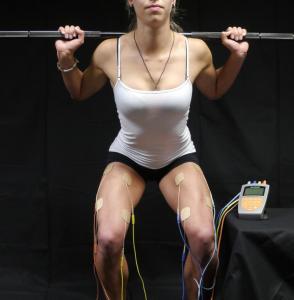
If your goal is to increase endurance, use Capillarisation, Resistance, and Aerob resistance in your training. AVOID Hypertrophy, Max. strength, and Explosive strength, as these impulses develop fast (white) fibers—opposite to your goal.
If your goal is strength and muscle mass gain, and improving speed and reflexes, use Hypertrophy, Max. strength, and Explosive strength. AVOID Capillarisation, Resistance, and Aerob resistance, as they develop type I and IIa fibers toward endurance—opposite to your aim.
Without exception, perform a muscle recovery treatment after every workout on the muscles most used that session!
You can request help from me by email, in the article comments, or by phone for choosing the device best suited to your goals and integrating it into your training plan.
Read my next article on muscle stimulation: The Role and Importance of Warm-Up

